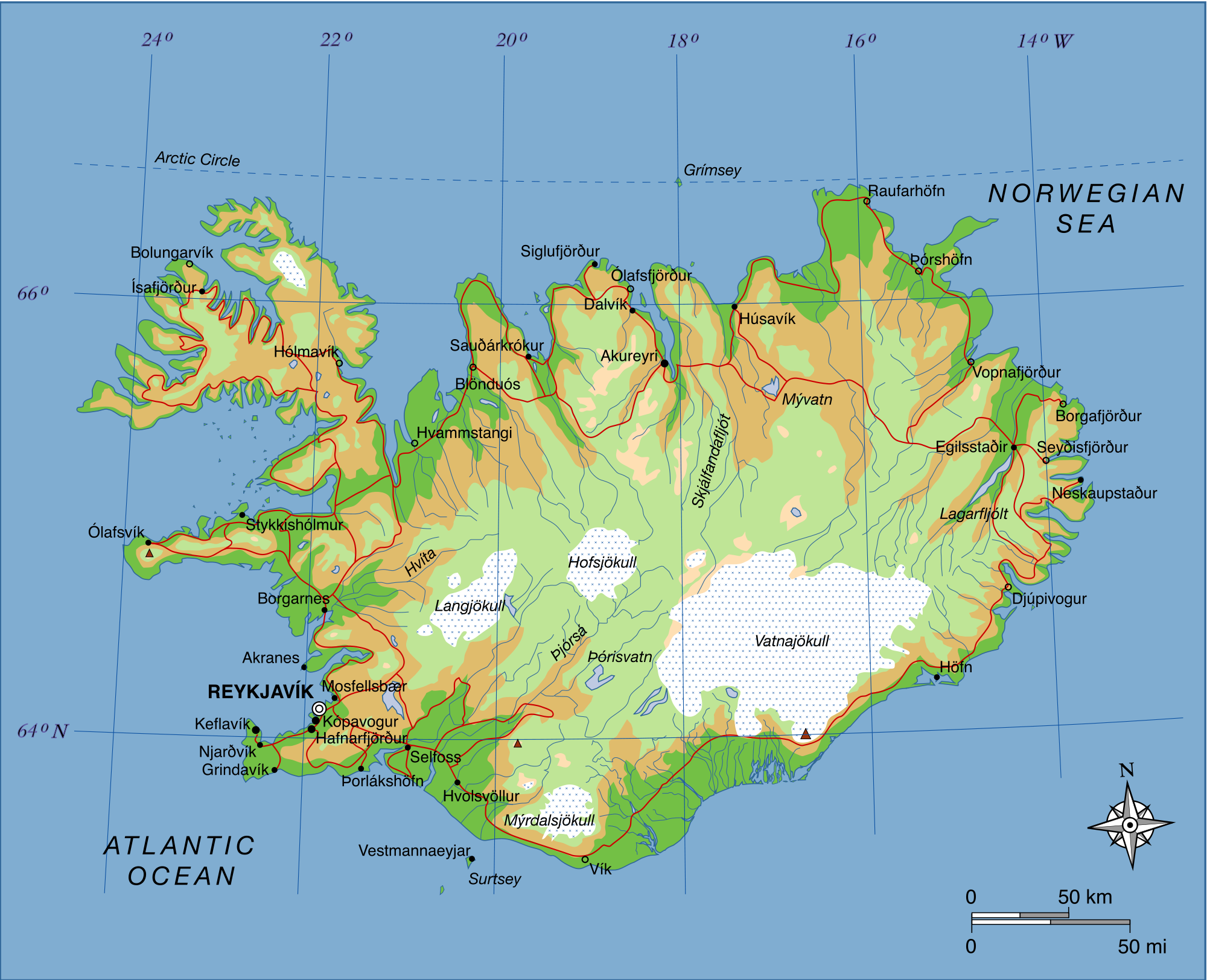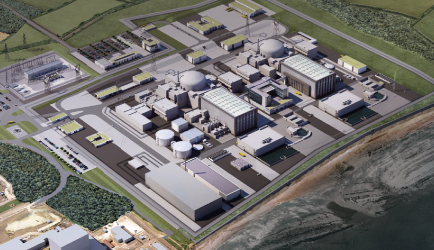
Blog
-
Geiger Readings for Aug 16, 2016
Ambient office = 102 nanosieverts per hourAmbient outside = 109 nanosieverts per hourSoil exposed to rain water = 100 nanosieverts per hourWhite potato from Central Market = 78 nanosieverts per hourTap water = 105 nanosieverts per hourFiltered water = 99 nanosieverts per hour -
Nuclear Weapons 219 – U.S. Considered Storing Nuclear Weapons In Iceland During Cold War
The U.S. has arrangements with other nations to station nuclear weapons in some countries and bombers to deliver some of them in other countries. This has always been with the full knowledge of the leaders of those nations and permission from the governments. However, there was a time when the U.S. considered stockpiling nuclear weapons in a NATO member without the knowledge or permission of that nation’s government.
Around 1960, the U.S. Navy ordered the construction of a storage facility for stockpiling nuclear depth charges that are called Advanced Underseas Weapons (AUW) at the Keflavik air base in Iceland. As far as the local Icelandic construction workers knew, the facility was simply for storing conventional torpedoes. It is unknown whether the U.S. ambassador to Iceland at the time knew of the intended future use of the constructed facility. It was later revealed around 1980 that the Nixon administration had considered Iceland to be what they called a location for “condition deployment” in case of an escalation in international tensions that could have led to nuclear war.
The U.S. never did deploy nuclear weapons to Iceland. About the time that the AUW storage facility was being constructed, the U.S. Ambassador was aware of discussions of U.S. nuclear weapons deployment to Iceland even if he did not know about the AUW facility. The Ambassador strongly opposed any nuclear deployment to Iceland. The Icelandic government did not want any nuclear weapons on their territory. The Ambassador was afraid that if the U.S. attempted to deploy such weapons openly or deployed such weapons covertly and the Icelandic government found out about it, there would a serious diplomatic incident and Iceland might even withdraw from NATO.
The U.S. National Archive has recently releases some communication documents from that period. Some of the information is redacted but it is clear from the context that Iceland was the focus of a discussion about nuclear weapons deployment. The archival materials included:
· A request from the Icelandic Foreign Minister in November of 1951 asking for reassurance that the U.S. did not intend to place an “atomic” base in Iceland.
· A telegram from the U.S. State Department in December of 1951 authorizing the a U.S. official to tell the Icelandic Foreign Minister that the U.S. would abide by the letter of the defense agreement negotiated earlier in the year.
· A questions asked by the Icelandic Foreign Minister in 1960 of whether the U.S. was storing atomic bombs at Keflavik air base or moving bombs through the air base.
· The draft of a reply to the Foreign Minister’s question that said that no nuclear weapons had been deployed to Iceland but that the Atlantic Command did have a requirement for a nuclear weapons storage site in Iceland.
In 1998, there was an article published that dealt with a release of information about deployment of U.S. nuclear weapons in foreign countries. Some of the information about which countries had hosted U.S. nuclear weapons had been redacted so the authors of the article made guesses. One of those guesses suggested that such weapons had been stored in Iceland during the Cold War. When the article was published, Icelandic officials angrily denied that such storage had ever taken place. The Clinton Administration also unequivocally denied any such deployment of U.S. nuclear weapons. So, it has been clearly established in contradiction to hints and rumors over the years that the U.S. has never deployed any nuclear weapons to Iceland.
Some nations are happy to host U.S. nuclear weapons against potential nuclear armed enemies. Other nations are ambivalent and have experienced public backlash against such weapons. Still other countries such as Iceland are dead set against ever having nuclear weapons within their borders.
Iceland:
-
Geiger Readings for Aug 15, 2016
Ambient office = 58 nanosieverts per hourAmbient outside = 78 nanosieverts per hourSoil exposed to rain water = 84 nanosieverts per hourPeach from Central Market = 80 nanosieverts per hourTap water = 141 nanosieverts per hourFiltered water = 133 nanosieverts per hour -
Geiger Readings for Aug 14, 2016
Ambient office = 95 nanosieverts per hourAmbient outside = 93 nanosieverts per hourSoil exposed to rain water = 87 nanosieverts per hourApple from Central Market = 82 nanosieverts per hourTap water = 80 nanosieverts per hourFiltered water = 67 nanosieverts per hour -
Geiger Readings for Aug 13, 2016
Ambient outside = 124 nanosieverts per hourSoil exposed to rain water = 139 nanosieverts per hourBlueberry from Central Market = 99 nanosieverts per hourTap water = 80 nanosieverts per hourFiltered water = 73 nanosieverts per hourSockeye salmon – Caught in USA = 103 nanosieverts per hour -
Nuclear Reactors 396 – More Problems For Troubled Hinkley Point C Project
The Hinkley Point C project in the U.K. is like a Mexican soap opera or a train wreck in slow motion. The French utility EDF was selected by the U.K. to construct two new power reactors at the Hinkley Point power plant on the coast of Britain. The reactors are to based on the new European Pressurized Reactor design. The Chinese nuclear company, China General Nuclear Power (CGNP) has agreed to pick up about a third of the cost if they are allowed to build a Chinese designed reactor with Chinese workers at another location in Britain.
The project has been in the works for over a decade. Politics, economics and technical issues have conspired to delay the project time and again. Just when EDF was finally ready to sign the contract, the Brexit happened and the new government of Theresa May decided to reconsider the deal and declined to sign the contract.
One big point of contention in the U.K. over the project is the fact that the intelligence agencies of the U.K. are worried about giving a potential enemy access to the nuclear infrastructure for the U.K.
Now comes the news that CGNP has been charged by the U.S. justice department with nuclear espionage. Assistant US attorney general John P Carlin said: “Allen Ho, at the direction of a Chinese state-owned nuclear power company (CGNP) allegedly approached and enlisted US-based nuclear experts to provide integral assistance in developing and producing special nuclear material in China.
“Ho did so without registering with the Department of Justice as an agent of a foreign nation or authorization from the US Department of Energy”, Carlin continued. “Prosecuting those who seek to evade US law by attaining sensitive nuclear technology for foreign nations is a top priority for the National Security Division.”
“The federal government has regulations in place to oversee civil nuclear cooperation”, said Michael Steinbach, executive assistant director of the FBI’s national security branch. “If those authorities are circumvented, this can result in significant damage to our national security. “The US will use all of its law enforcement tools to stop those who try to steal US nuclear technology and expertise.”
This sort of unscrupulous and illegal behavior is just the sort of thing that the intelligence agencies of the U.K. are worried about if the Hinkley Point C project goes forward.
China was counting on the approval of the Hinkley Point C project to allow them to build a demonstration model of a Chinese reactor which they could use to help them sell their nuclear technology abroad. The refusal of the May government to sign the contract has prompted a harsh reaction on the part of the Chinese government. The U.K. is the largest trading partner that China has in the European Union. Some of the Chinese comments seem to suggest that trade and the special relationship between the U.K. and China may suffer if the U.K. does not sign the contract and go ahead with the Hinkley Point C project.
A new analysis indicates that the cost of wind and solar power will be substantially lower by 2025 than the cost of electricity generated by the Hinkley Point C reactor when they are supposed to be completed in 2025. The big question is how many more negative factors will have to pile up before the U.K. cuts its losses and permanently cancels the Hinkley Point C project.
Artist’s concept of Hinkley Point C:





